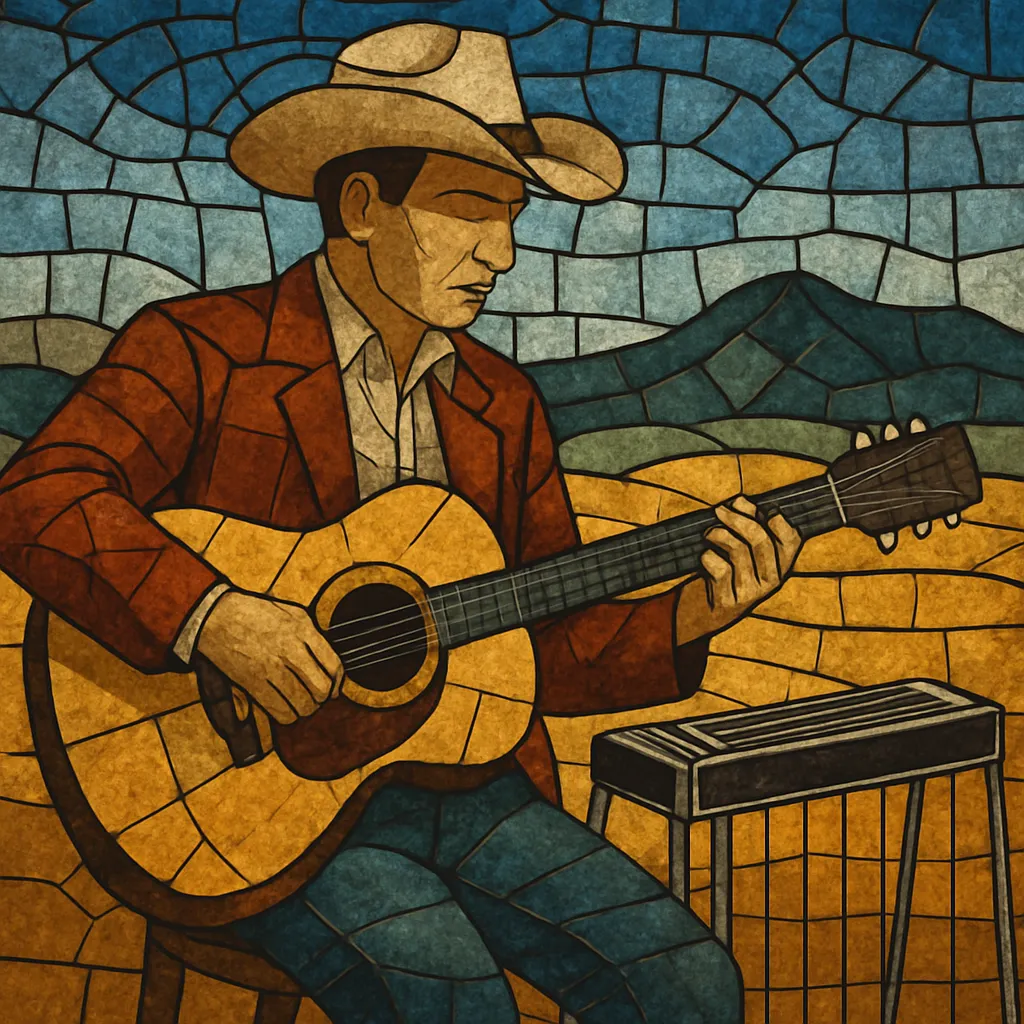
The Bakersfield sound is a hard-edged, twang-heavy style of country music that emerged in and around Bakersfield, California, as a reaction against the string-laden polish of Nashville country. It favors bright Fender Telecaster guitars, crying pedal steel, tight rhythm sections, and dry, unadorned production.
Characterized by driving backbeats, punchy bass, and “chicken pickin’” lead lines, the style keeps arrangements lean and danceable, with melodies grounded in working-class storytelling. Its sonic fingerprint—clean-but-biting guitars, snare on 2 and 4, and minimal studio gloss—made it a cornerstone of modern country and a key bridge to country rock and later neo-traditional movements.
The Bakersfield sound took shape in the late 1950s among Dust Bowl migrants and oilfield workers who had resettled in California’s Central Valley. Nightclubs and honky-tonks around Bakersfield demanded loud, danceable bands that could cut through the noise, leading musicians to adopt bright, amplified guitars and a hard-swinging backbeat. This sound emerged as a counterpoint to the orchestrated “Nashville Sound,” favoring grit over gloss.
Artists such as Buck Owens (with the Buckaroos) and Merle Haggard (with the Strangers) crystallized the style on Capitol Records under producer Ken Nelson. Don Rich’s Telecaster leads and Ralph Mooney-inspired pedal steel defined the sonic palette: crisp, staccato licks, tight snare, and dry room sound. Hits like Owens’s “Act Naturally” and Haggard’s “Mama Tried” showcased working-class narratives, dance-hall tempos, and a lean mix that foregrounded band interplay.
Wynn Stewart, Tommy Collins, Red Simpson, and Susan Raye deepened the scene’s catalog—from truck-driving anthems to barroom ballads—while Bakersfield clubs (e.g., the Blackboard) served as incubators for a distinct band-first ethos.
By the 1970s, the Bakersfield aesthetic helped catalyze outlaw country and country rock, influencing artists who sought authenticity and road-tested arrangements. Its DNA reappeared in the 1980s neo-traditional wave and in revivalists like Dwight Yoakam, while roots rock and alt-country drew on its punchy minimalism.
Today, the Bakersfield sound remains a template for guitar-forward country: crisp Telecaster tone, honest lyrics, and a rhythm section built to move a dance floor.
-
•
Sketch a two-step or shuffle groove at 120–140 BPM.
•Build a I–IV–V progression and craft a catchy, twangy guitar riff.
•Write a plainspoken lyric with a strong, singable chorus.
•Arrange a brief instrumental break spotlighting Tele and steel.
•Track dry and tight; mix for punch and presence, not polish.

